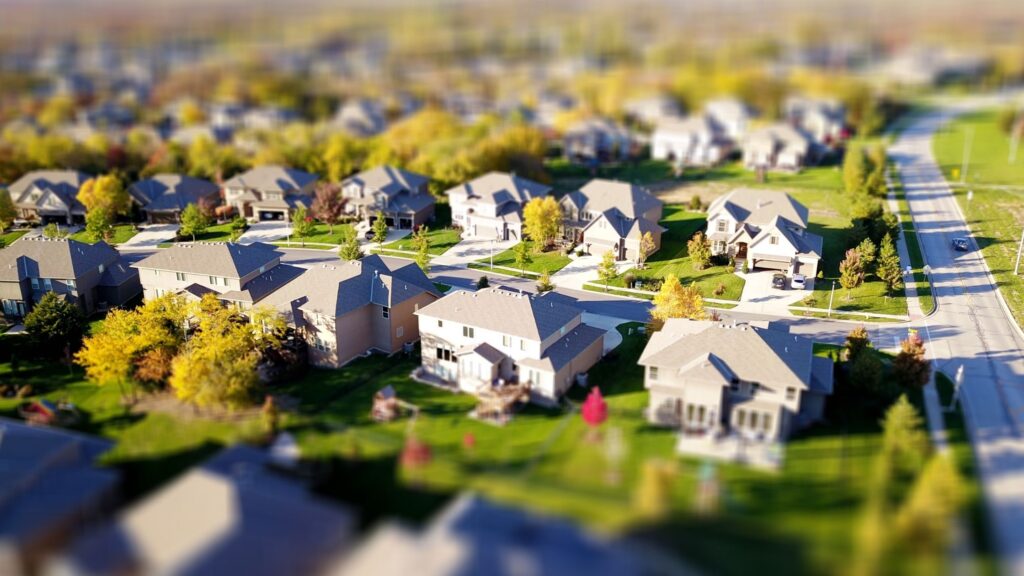Ever stepped into a neighborhood and instantly felt either “This is it!” or “Nope, not for us”? Choosing where to live can feel a bit like speed-dating — you’re trying to catch subtle cues, imagine long-term compatibility, and hope you’re not missing any red flags. And when you’ve got a family in the picture, that decision hits even harder. You’re not just picking a house. You’re choosing the environment your kids will grow up in, the streets they’ll ride bikes on, the schools that’ll shape their future — the whole backdrop of your daily life.
The real challenge? There’s no one-size-fits-all answer. Families want different things: safety, comfort, convenience, good schools, friendly neighbors, walkability, or maybe just a place where the kids can scream without judgment (we’ve all been there). With so many factors competing for attention, it’s easy to feel overwhelmed or second-guess your instincts.
In this guide, you’re going to learn exactly how to evaluate a neighborhood with clarity and confidence — from researching schools and safety to understanding lifestyle fit, amenities, commute times, and long-term value. By the end, you’ll know how to choose a community that doesn’t just look good on paper, but genuinely feels like home.
Let’s break it down step by step.
What Makes a Neighborhood “Family-Friendly”? Understanding the Basics
Before diving into checklists, comparisons, and scouting missions, it helps to understand what truly defines a “family-friendly” neighborhood, because the term means different things to different people.
At its core, a family-friendly neighborhood is one that supports your family’s lifestyle, goals, safety, and day-to-day needs. It usually includes a mix of strong schools, safe streets, access to essentials, outdoor spaces, and an overall environment that promotes comfort and community.
Why does this matter? Knowing the fundamentals helps you filter options quickly without getting distracted by marketing buzzwords or perfect listing photos. Even the prettiest house won’t make up for a neighborhood that feels isolated, noisy, unsafe, or inconvenient.
Here’s why understanding these basics is essential:
- You avoid long-term regrets — Neighborhood issues can’t be fixed as easily as a kitchen renovation.
- You match environment with values — Whether you want walkability, quiet, or a bustling community.
- You reduce stress and uncertainty — Clear criteria make decision-making 10× easier.
A truly family-friendly area often provides:
- Safe, well-lit streets
- Quality schools or learning centers
- Parks, playgrounds, green spaces
- Nearby groceries, clinics, and essentials
- A sense of community and belonging
- Reasonable commute times
- Stable property values
Many families assume only suburban areas check these boxes, but that’s not always true — some urban neighborhoods offer excellent schools, tight-knit communities, and walkable amenities. This foundation helps you approach the decision with clarity as we move into the deeper evaluation.
How to Evaluate a Neighborhood for Your Family (Step-by-Step Guide)
Step 1: Identify Your Family’s Must-Haves
Before scouting locations, take a moment to reflect on what actually matters to your family. Do you want quiet streets? A lively community? Nearby schools or daycare? List your non-negotiables first. This ensures you’re not simply choosing based on aesthetics but on what supports your life.
Step 2: Check Local School Quality
Even if you don’t have kids yet, school quality impacts safety, resale value, and the overall environment. Explore school ratings, parent reviews, and extracurricular offerings. Consider visiting campuses if possible — sometimes the vibe tells you more than the website ever will.
Pro Tip: Strong school districts tend to maintain higher property values over time.
Step 3: Explore Safety and Crime Data
Safety is one of the biggest priorities for families. Look at crime statistics, talk to locals, check lighting conditions, and explore the area during different times of day. Notice how comfortable you feel walking around at night — your instincts rarely lie.
Step 4: Test Convenience and Commute
Convenience is underrated until you don’t have it. Map out commute times to work, nearby grocery stores, hospitals, parks, and daycare options. Consider traffic at peak hours — a 15-minute drive on Google Maps can turn into 45 minutes in real life.
Step 5: Assess Community and Culture
Neighborhoods have personalities. Some feel warm and family-oriented, while others are quieter or more fast-paced. Attend local events, visit coffee shops, or walk through parks. Observe how people interact — are neighbors friendly? Do kids play outside?
Step 6: Visit During Different Times of Day
A neighborhood can look peaceful at noon and chaotic at night. Visit in the morning, afternoon, evening, and on weekends. You’ll notice things you’d miss otherwise — noise levels, traffic flow, neighbor activity, or even smells (yes, that matters).
Step 7: Evaluate Long-Term Value and Growth
Look at development plans, real estate trends, and long-term projections. A neighborhood with rising property values, new amenities, or infrastructure improvements usually signals stability and good investment potential.
Step 8: Trust Your Gut, It Knows More Than You Think
Sometimes two neighborhoods check all the boxes on paper, but only one feels right. Pay attention to that feeling. Home is emotional, not just logical.
How Families Apply These Criteria in Real Life
Now that you know the process, here’s how families use these steps in real scenarios:
Use Case #1: The Working Parents Seeking Convenience
A couple with two kids narrowed their search to neighborhoods with strong schools and short commutes. They used the step-by-step approach to compare safety, walkability, and nearby daycare options. The result? They reduced their daily commute by 25% and found a community with after-school programs that made their schedule easier.
Use Case #2: The Budget-Conscious Family Prioritizing Value
Another family wanted affordability without sacrificing safety. They evaluated developing neighborhoods, checked long-term value projections, and visited on weekends to observe real activity. They found an up-and-coming area where prices were still reasonable — and their home value increased within two years.
Use Case #3: The Lifestyle-Focused Family
A family that loved outdoor activities prioritized access to parks, bike trails, and community centers. Using the assessment process, they chose a neighborhood with weekend farmer’s markets, open fields, and playgrounds, leading to a healthier, more active family routine.
These examples show just how flexible and practical this process is, no matter your lifestyle or priorities.
Expert Tips for Choosing the Right Neighborhood
- Research Future Developments: A peaceful street today could be a commercial zone tomorrow. Check city plans to avoid surprises. This helps you choose an area with predictable growth and stable home values.
- Rank Your Priorities: Not everything can be a must-have. Rank your top five needs. This clarity prevents decision fatigue and helps you avoid compromises you’ll regret later.
- Talk to Real Residents and Pros: Online research is helpful, but nothing beats talking to people who already live there. You can also reach out to experienced Las Vegas real estate agents who know the local market inside and out. They’ll tell you the truth about noise, traffic, HOA quirks, market trends, and the overall community feel.
- Consider Walkability and Traffic Flow: Walking the neighborhood reveals things Google Maps can’t, like narrow sidewalks, hidden alleys, or streets that feel unsafe for kids.
- Think Long-Term: Choose a neighborhood that supports not only your family today but your future needs too, schooling, job changes, or expanding family size.
Final Thoughts: Choosing a Neighborhood You’ll Truly Love
Choosing the best neighborhood for your family isn’t just about picking a location — it’s choosing an environment where you can grow, feel safe, and build memories together. Now that you know what to look for, how to evaluate options, and what really matters long-term, you’re equipped to make a confident, informed decision.
Start exploring potential neighborhoods today. Pay attention to the little details, involve your family, and trust both the data and your intuition.
Ready for your next step? Dive into our guide on smart home-buying strategies to help you make the transition even smoother.
FAQ: Choosing the Best Neighborhood for Your Family
- What makes a neighborhood good for raising kids?
A good family neighborhood usually has low crime rates, quality schools, nearby parks, convenient amenities, and an overall sense of community. These factors create a safe and supportive environment that helps kids thrive. - How do I know if a neighborhood is safe?
Check crime statistics, visit at different times, observe lighting, and speak with residents. Walking around gives you a real feel for the area’s safety and energy. - Are school ratings really important when choosing a neighborhood?
Yes. High-performing schools signal a stable community and help maintain property values. Even if you don’t have kids, strong school districts benefit from long-term investment. - What should I look for during a neighborhood visit?
Pay attention to noise, traffic, cleanliness, parks, sidewalks, and neighbor interactions. Notice how you feel while walking. Comfort is a huge indicator. - How do future developments affect neighborhood quality?
Developments can increase traffic or noise, but also bring new amenities. Reviewing city plans helps you decide if future changes align with your lifestyle and goals.



































